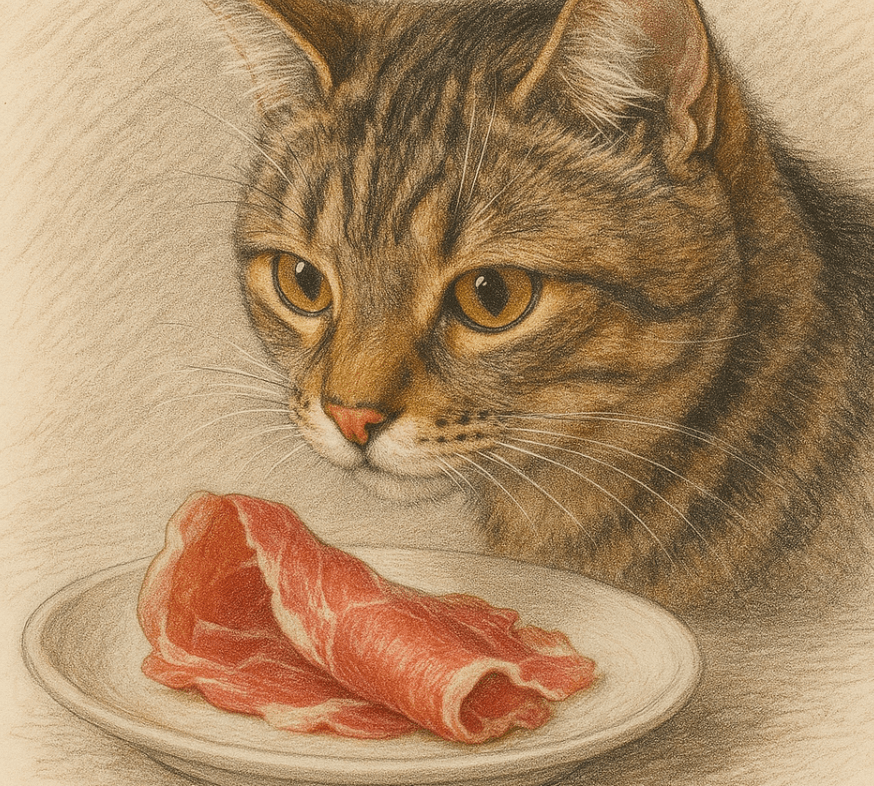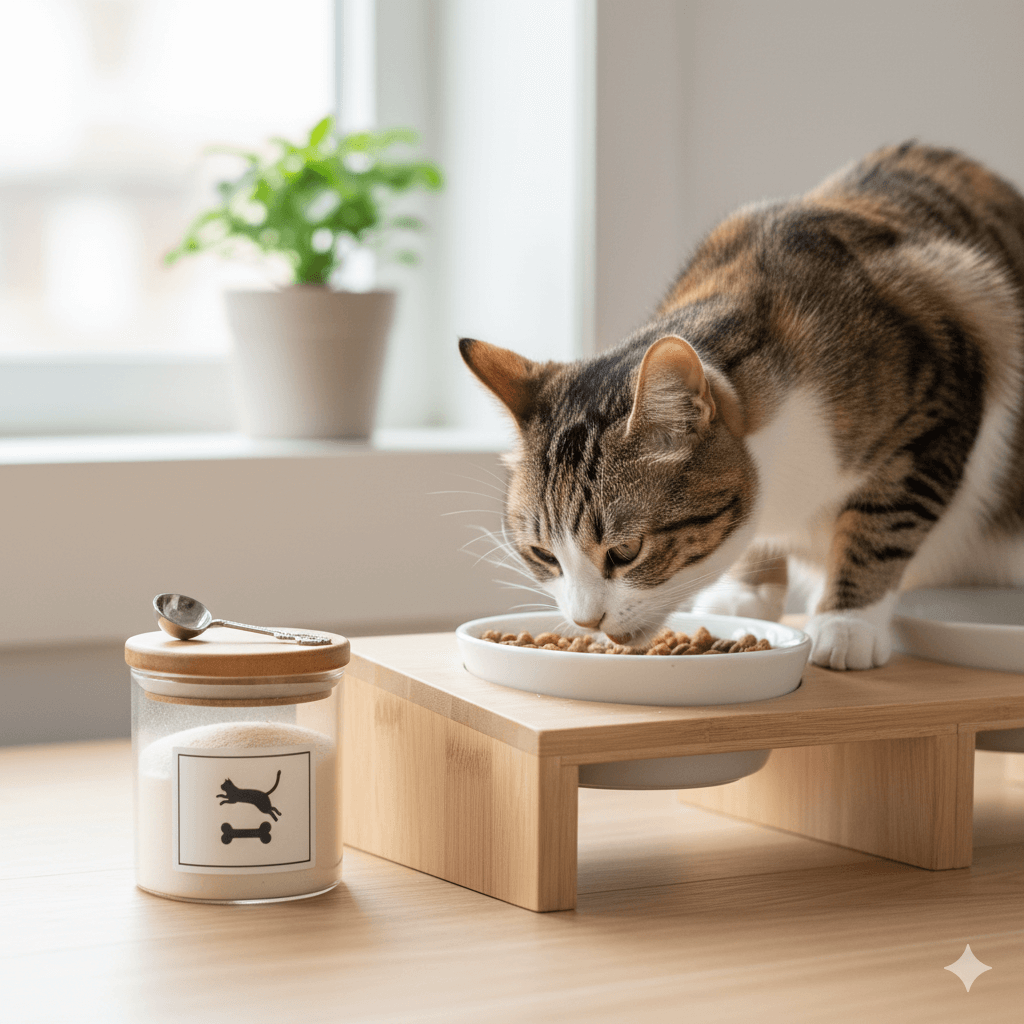Can Cats Eat Prosciutto? What You Need to Know
When it comes to sharing human food with our feline friends, it’s important to tread carefully. Cats are obligate carnivores, meaning their diet is primarily meat-based, so it’s no surprise that they might be curious about a slice of prosciutto. However, while this thinly sliced Italian cured ham may seem like a tasty treat for your cat, there are several factors to consider before offering it. From potential health risks to nutritional benefits, understanding whether cats can safely eat prosciutto is essential for ensuring their well-being. In this blog post, we’ll explore everything you need to know about feeding prosciutto to your cat and provide expert advice on keeping them healthy and happy.
Potential Risks of Feeding Prosciutto to Cats
While prosciutto may seem like a harmless snack, it poses several risks that every cat owner should be aware of. These hazards can range from minor discomfort to serious health concerns.
High Salt Content:
Prosciutto is heavily salted during the curing process, which can lead to dehydration or sodium poisoning in cats if consumed in large amounts.Risk of Choking:
Thin slices of prosciutto can pose a choking hazard, especially if your cat tries to swallow it whole without chewing properly.Digestive Upset:
The rich and fatty nature of prosciutto can upset your cat’s stomach, leading to vomiting or diarrhea.Additives and Preservatives:
Many cured meats contain nitrates, nitrites, or other additives that are harmful to cats over time.Allergic Reactions:
Some cats may have sensitivities or allergies to processed meats, resulting in skin irritation or respiratory issues.
These risks highlight why caution is essential when considering giving prosciutto to your cat. Always prioritize their safety over curiosity or convenience.
Benefits of Prosciutto (In Moderation)
Despite the risks, prosciutto does offer some potential benefits for cats when given sparingly and under supervision. These advantages are rooted in its high protein content and natural appeal to carnivorous pets.
High-Quality Protein:
Prosciutto is made from pork, providing a rich source of protein that supports muscle development and overall health.Palatability:
The strong aroma and flavor of prosciutto can entice picky eaters who may otherwise refuse their regular food.Low Carbohydrates:
Unlike many human snacks, prosciutto contains minimal carbs, making it less likely to disrupt a cat’s balanced diet.Occasional Treat Option:
In very small amounts, prosciutto can serve as a rare indulgence for your cat, satisfying their curiosity about human food.Hydration Boost:
If served fresh and moist, prosciutto can contribute to your cat’s daily water intake, though this should not replace clean drinking water.
While these benefits exist, moderation is key to avoiding negative consequences.
Check this guide 👉Can Cats Eat Parmesan Cheese? Best 7 Expert Tips!
Check this guide 👉Can Cats Eat Cookies? Best 7 Expert Tips!
Check this guide 👉Can Cats Eat Lentils? Best 7 Expert Tips!

Safe Alternatives to Prosciutto | Risks of Unsafe Human Foods |
|---|---|
Plain cooked chicken (unsalted) | Onions, garlic, and chives (toxic to cats) |
Boiled turkey (no seasoning) | Chocolate and caffeine (poisonous) |
Boneless fish (like salmon or tuna) | Grapes and raisins (kidney damage risk) |
Plain scrambled eggs | Alcohol (extremely toxic) |
Small pieces of lean beef | Raw dough (fermentation causes bloating) |
How to Safely Offer Prosciutto to Your Cat
If you decide to give your cat a taste of prosciutto, it’s crucial to take precautions to minimize risks. Follow these guidelines to ensure a safe experience.
Limit Portion Sizes:
Offer only a tiny piece—about the size of your thumbnail—to avoid overwhelming their system with salt or fat.Choose Plain Varieties:
Avoid flavored or seasoned prosciutto, as added spices and herbs can irritate your cat’s digestive tract.Monitor for Reactions:
Watch for signs of discomfort, such as excessive thirst, vomiting, or lethargy, after feeding prosciutto.Avoid Regular Feeding:
Treat prosciutto as an occasional indulgence rather than a regular part of their diet to prevent long-term health issues.Consult Your Veterinarian:
Before introducing any new food, seek advice from your vet to ensure it aligns with your cat’s specific dietary needs.
By following these steps, you can mitigate risks while allowing your cat to enjoy the occasional special treat.
Signs Your Cat May Be Struggling After Eating Prosciutto
Even with precautions, complications can arise if your cat consumes too much prosciutto or has an adverse reaction. Watch for these warning signs to act quickly if something goes wrong.
Excessive Thirst or Urination:
This could indicate sodium poisoning caused by the high salt content in prosciutto.Vomiting or Diarrhea:
Digestive upset is common after consuming rich or fatty foods like cured meats.Lethargy or Weakness:
A sudden lack of energy may signal dehydration or other systemic issues related to salt toxicity.Swelling or Difficulty Breathing:
Allergic reactions can cause swelling in the face or throat, requiring immediate veterinary attention.Loss of Appetite:
Refusal to eat their regular food may suggest nausea or gastrointestinal distress.
Recognizing these signs early allows you to seek veterinary care promptly, preventing further complications.
Common Mistakes to Avoid When Feeding Human Food to Cats
Feeding your cat human food requires careful consideration to avoid mistakes that could endanger their health. Here are some pitfalls to watch out for.
Ignoring Salt Levels:
Many human foods, like prosciutto, are high in salt, which can harm your cat’s kidneys and overall health.Assuming All Meats Are Safe:
Processed or seasoned meats often contain harmful additives that aren’t suitable for cats.Overlooking Portion Control:
Even “safe” foods can become problematic if fed in large amounts, disrupting your cat’s balanced diet.Neglecting Veterinary Advice:
Skipping professional guidance can result in unknowingly harming your cat with inappropriate food choices.Rewarding Begging Behavior:
Giving in to begging reinforces unhealthy habits and encourages overeating or reliance on human snacks.
Avoiding these mistakes ensures a safer and healthier experience for your cat.
Safer Meat-Based Treats for Cats
If you’re looking for ways to spoil your cat without risking their health, here are some safer meat-based alternatives to prosciutto.
Plain Cooked Chicken:
Low in fat and easy to digest, plain chicken is an excellent source of protein for cats.Boiled Turkey:
Another lean option, boiled turkey provides essential nutrients without added seasonings or preservatives.Boneless Fish (Salmon or Tuna):
Rich in omega-3 fatty acids, fish supports coat health—but only serve it occasionally to avoid mercury exposure.Scrambled Eggs:
Eggs are packed with protein and vitamins, but ensure they’re fully cooked and free of salt or oil.Small Pieces of Lean Beef:
Cooked beef offers variety in your cat’s diet, provided it’s plain and cut into manageable sizes.
These alternatives allow you to treat your cat responsibly while keeping them safe.
Understanding Your Cat’s Carnivorous Nature
Cats are obligate carnivores, meaning their bodies are designed to thrive on a meat-based diet. Understanding this instinct helps explain their fascination with foods like prosciutto.
Protein Dependency:
Cats require high levels of animal-based protein to maintain muscle mass and support vital bodily functions.Taste Preferences:
Their heightened sense of smell draws them to aromatic foods like cured meats, despite the associated risks.Nutrient Requirements:
Essential nutrients like taurine, found in meat, are critical for vision, heart health, and immune function.Curiosity About Human Food:
Cats are naturally curious creatures, and observing you eat something enticing can spark interest in trying it themselves.Selective Eating Habits:
While adventurous, cats often prefer familiar flavors, so introducing new foods should always be gradual and cautious.
By recognizing these behaviors, you can better address your cat’s needs in a safe and controlled manner.
Frequently Asked Questions About Cats and Prosciutto
Is prosciutto safe for cats?
In very small amounts, yes, but it’s not recommended due to its high salt and fat content.
Can kittens eat prosciutto?
Kittens should avoid prosciutto entirely, as their developing systems are more sensitive to salty or fatty foods.
What happens if my cat eats too much prosciutto?
Overconsumption can lead to dehydration, digestive upset, or even sodium poisoning. Contact your vet immediately.
Are there healthier alternatives to prosciutto?
Yes, plain cooked chicken, boiled turkey, or boneless fish are safer and more nutritious options.
How often can I give my cat prosciutto?
Ideally, never—or at most once every few months—as a rare treat in extremely small portions.
Prioritizing Your Cat’s Health When It Comes to Prosciutto
Feeding prosciutto to your cat can be tempting, especially when they beg for a bite of your snack. However, the potential risks far outweigh the benefits, making it a food best avoided or offered in the smallest quantities possible. By understanding the dangers, choosing safer alternatives, and consulting your veterinarian, you can ensure your cat stays healthy and happy. Remember, your feline friend relies on you to make the best dietary choices for them—so always prioritize their well-being above all else.
Understanding Bone Supplement for Cats: Best 7 Expert Tips! – Safe, vet-approved guidance for strong feline bones & balanced nutrition.
Bone Supplement for Dogs: Best 7 Expert Tips! – Expert guide to calcium, collagen & bone health for every life stage.
Understanding Can Cats Get Sunburn: Best 7 Expert Tips! – Protect your feline from UV damage with vet-backed prevention strategies.
How to Train a Seizure Alert Dog: Best 7 Expert Tips! – Learn expert-backed steps to nurture natural instincts into reliable, life-saving seizure alerts.




